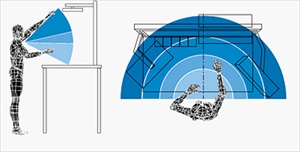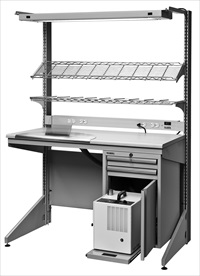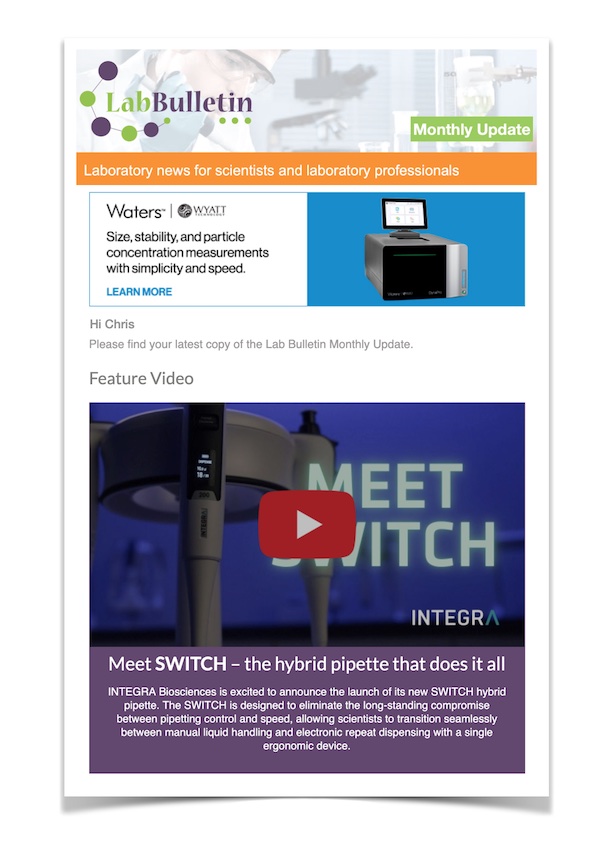Members Login

Channels
Special Offers & Promotions
Six Tips for Selecting a Laboratory Workstation
Buying technician workstations for your laboratory is a major capital expense, deserving of careful consideration to avoid making a costly mistake. The choice can be complicated and there are a number of factors that you should consider.
The key ones include initial purchase price, long term ownership cost, laboratory layout and workstation design, supplier support services, and flexibility. This last one is especially tricky, since it requires a bit of crystal ball to make sure your choice supports changing laboratory environments, due to expansion and consolidation, as well as changing trends in equipment design and usage. Follow these six tips for selecting a laboratory workstation that meets all your current needs, while positioning you to adapt to whatever comes down the parkway.
1. Count up all the costs – not just the obvious ones
Be sure to factor in all related costs – don’t just look at the bottom line for the workstation. To the purchase price you should add shipping costs; installation costs; time, cost, and complexity of adjusting individual workstations; costs for add-on accessories (for example, shelves, storage, and tool and equipment holders); reconfiguration costs (should you want to convert single-sided workstations to double-sided in future); and of course, the expected lifetime of the product and the need to replace it. Consider how you might be able to reduce your floor space requirements (and costs) by maximizing your use of vertical space, which minimizes the workstation footprint.
2. Consider your future business plans
Are you planning to expand, reorganize, or relocate? Changes in processes and techniques also may mean changing workstation layout, so consider modular, movable furnishings that can be easily expanded or rearranged. If you are located in a rented or leased space, built-in workstations may limit flexibility and result in additional costs for repairing walls and floors if you move.
3. Pay careful attention to ergonomics
 A comfortable employee is a productive employee. Laboratories can sometimes be the source of repetitive strain injuries (RSIs), which result in musculoskeletal disorders (MSDs) such as carpal tunnel syndrome. The number one factor in addressing these ergonomic concerns is selecting equipment that allows employees to rearrange and adjust workstation elements easily.
A comfortable employee is a productive employee. Laboratories can sometimes be the source of repetitive strain injuries (RSIs), which result in musculoskeletal disorders (MSDs) such as carpal tunnel syndrome. The number one factor in addressing these ergonomic concerns is selecting equipment that allows employees to rearrange and adjust workstation elements easily.
Technicians come in all shapes and sizes, so make sure they can raise, lower, or change the tilt angle of workstation shelves; add or remove shelves; change the height or tilt angle of work-surfaces; change the height or direction of lighting; raise or lower the height of footrests; and mount or relocate tools, equipment, and storage on either side of a workstation. Figure 1 is a graphic illustrating the preferred horizontal and vertical reach zones you should work with.
4. Consider how your laboratory will adapt to changing equipment use
In recent years, the equipment used to execute essential tasks in Laboratories has been changing dramatically. None of us has the proverbial crystal ball, but before putting down your hard-earned dollars on a work station, review this list of Laboratory trends and try to determine which items may affect your operations. Then, make sure the work station you select can support them.
- Increased use of high-speed electric and air hand tools
- Central suction featuring variable port control
- Laser welding replacing soldering
- Vacuum-pressure induction casting
- Increased use of computers featuring scanning and CAD systems
- 3-D printing (also known as additive manufacturing) technology
 5. Build in flexibility
5. Build in flexibility
We discussed earlier the importance of making sure your laboratory adequately considers your future plans, but flexibility is so important that it deserves its own tip. Your workstations should be able to support any major layout redesign due to expansion, the changing nature of the work, or departmental reorganization. Don’t let your workstations present an obstacle to growth!
Truly modular and flexible workstations permit a variety of layout designs by sharing interchangeable components. Your choices include inline, back-to-back, L, C, or X configurations. Having said that, when building in flexibility, always keep in mind conversion costs associated with changing work station layouts. Achieving flexibility without discarding parts you’ve already invested in is your goal. Figure 2 is an example of a Lista Modular Technician workstation that can be used for a variety of tasks.
Avoid workstations designed around a single tasks or process, and instead opt for workstations that can address different applications within the laboratory. A flexible, modular design with common, interchangeable components and with provisions to accommodate a wide variety of work surfaces, drawers, shelves, and other accessories, can be used in a variety of departments and for numerous functions.
6. Make sure you have access to the support you need
A reliable supplier can be your partner in selecting the right workstation. For laboratories that operate from multiple locations, be sure the supplier has support branches near all locations. Ask about support services, such as laboratory layout and design, ability to customize purchased products, installation services, and training.
James Anderson is the Vertical Markets and National Accounts Manager for Stanley Workplace Solutions. He has over 25 years of experience in the industry and is an expert on ergonomic workspace solutions.
more about Lista International
Media Partners


